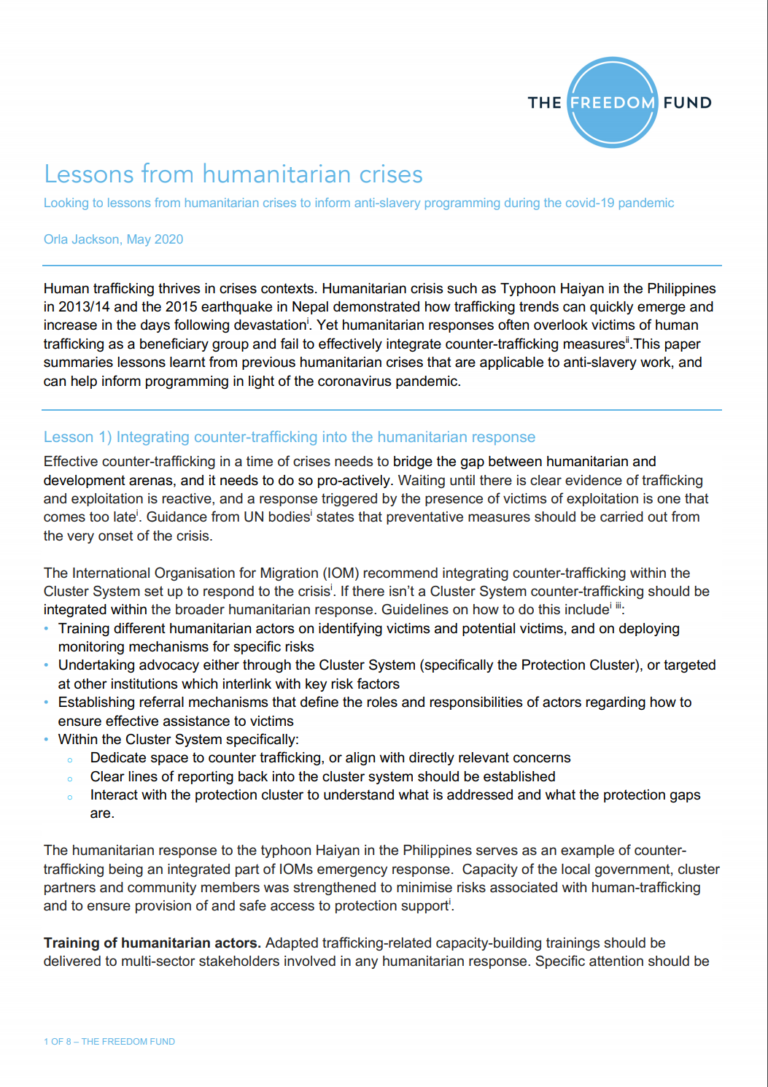Psychometric Measures of Empowerment and Disempowerment of Survivors of Human Trafficking
GuidancePrepared by Sanjeev Dasgupta and Ana Maria Soto, Issara Institute. According to the 2017 Global Estimates of Modern Slavery, there are about 40 million people living in modern slavery situations worldwide. The Asia-Pacific region has the highest...Read More

